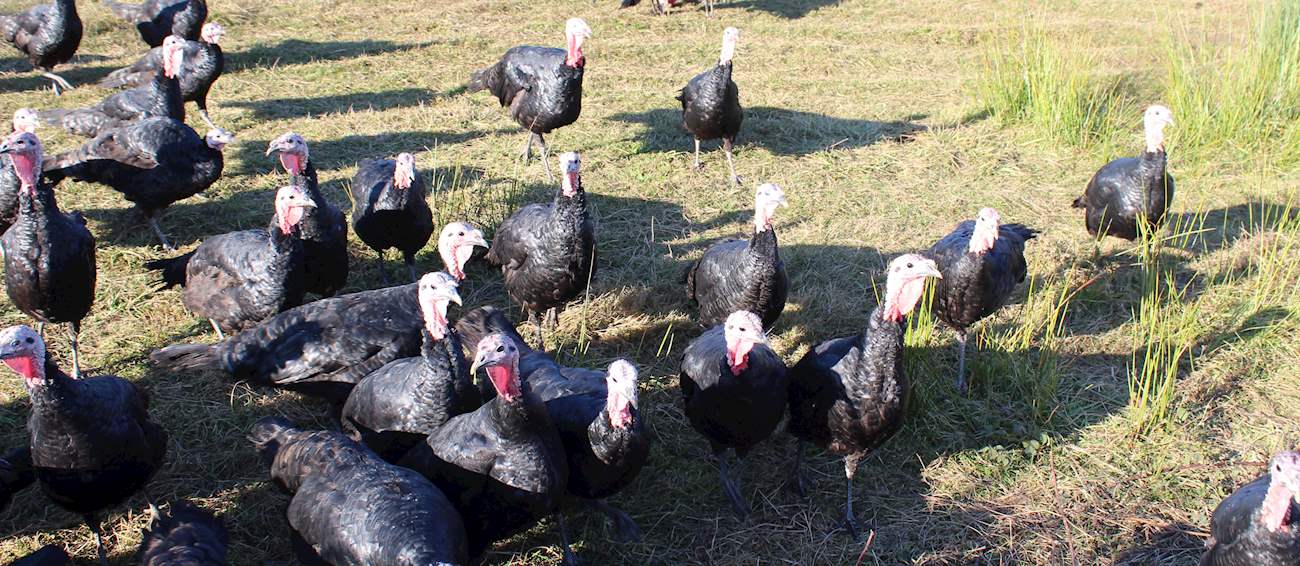Best European Turkey Types
The Zagorje turkey is a traditional breed of turkey that has been raised in a traditional on small farms in the region of Zagorje. These birds graze freely in the open and are only fed with locally grown corn and other grains when green pasture is not available.
The meat of this turkey is juicy, tender, and very flavorful. It is traditionally served roasted alongside mlinci, an authentic type of sheet pasta that is boiled and added to the pan to roast along with the meat, soaking its flavors and juices in the process.
Dinde de Bresse is a farm turkey from the favorable Bresse region in France, produced specifically for the winter festive period, Christmas and New Year as a traditional meal. The turkeys have white flesh and skin, while their feathers and feet are black.
They feed on a cereal-based diet of buckwheat and maize, making sure that the meat is of the highest quality. Because of its unique characteristics and the tender, succulent meat, it holds a high market value in France, but it is surely worth it. Although it is usually prepared at festive times roasted in an oven, it can be prepared as turkey breast fillets, stuffed with herbs, chestnuts, or as escalopes of turkey breast - sliced meat with a cream sauce.
These turkeys are unique in flavor and texture, made using traditional methods and are of the highest quality due to the great conditions for growing (free range). Turkeys are dry plucked by hand and matured (hung for a minimum of seven days) before they are sold.
They reach the peak of their popularity around Christmastime, because a traditional Christmas meal must include a turkey. The meat is moist, dense and tender and its flavor is very strong and similar to game birds.
TasteAtlas food rankings are based on the ratings of the TasteAtlas audience, with a series of mechanisms that recognize real users and that ignore bot, nationalist or local patriotic ratings, and give additional value to the ratings of users that the system recognizes as knowledgeable. TasteAtlas Rankings should not be seen as the final global conclusion about food. Their purpose is to promote excellent local foods, instill pride in traditional dishes, and arouse curiosity about dishes you haven’t tried.






